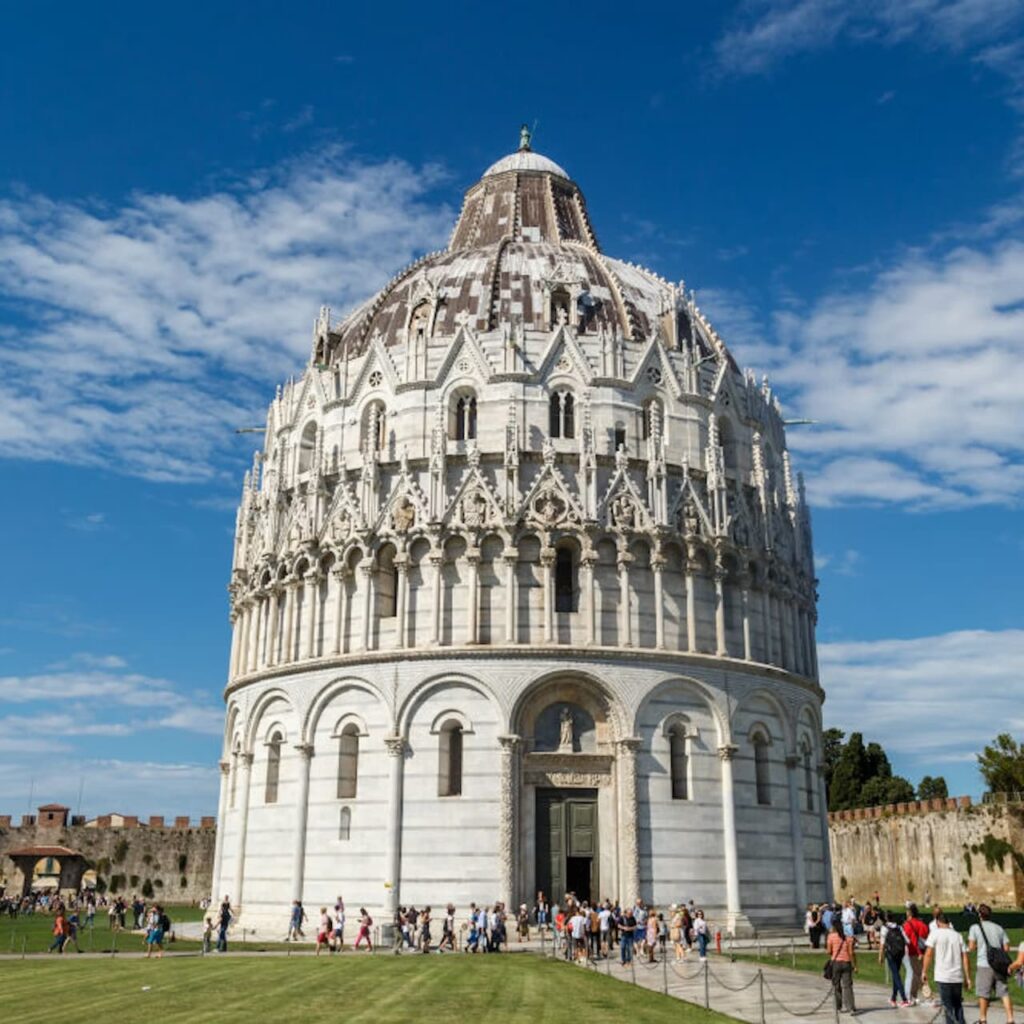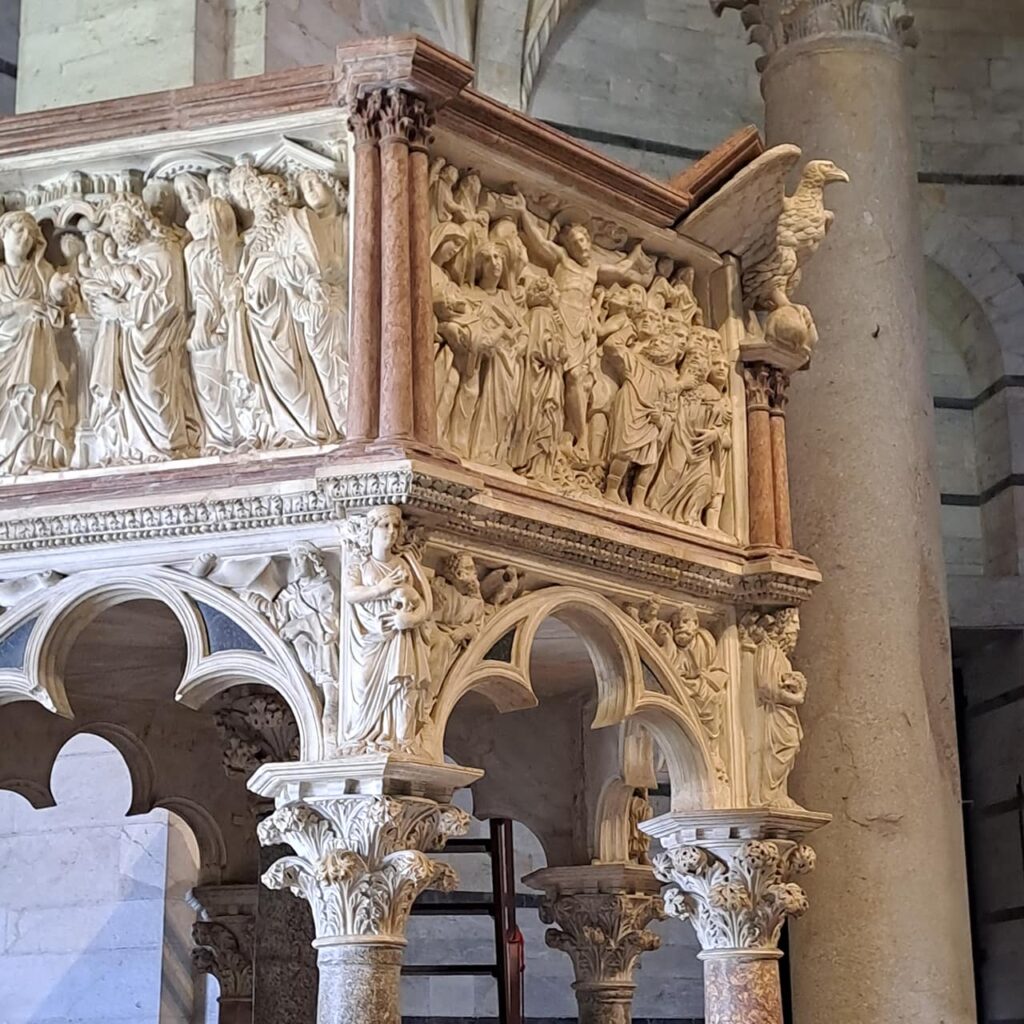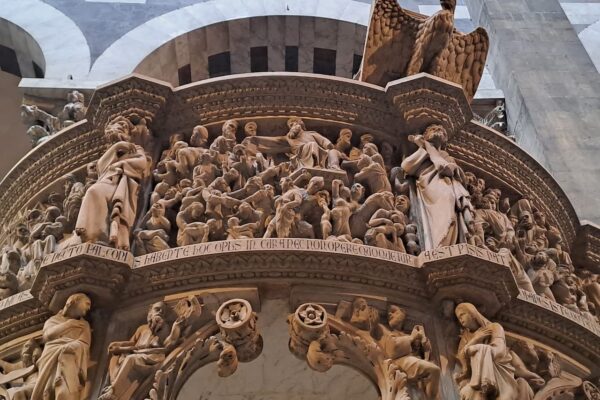Hello, if you are planning your trip to Tuscany to visit Pisa and its wonders and you want information about the pulpit of the Baptistery of Pisa here you will find what you are looking for! In this post I will tell you where the pulpit of the Baptistery is located, how to buy tickets and skip the line.
I will tell you the history of the Baptistery pulpit, its architecture and its art history.
Are you ready? Let’s get started!
Wait. Before you start reading the article, a brief warning: you need to know that the Baptistery of Pisa is the largest Baptistery in the world, which is precisely why you will risk running into a long line at the ticket office to visit it. To enter the attraction by skipping the line at the entrance, it is always recommended to purchase a ticket online. Click below to book your admission and get inside the Baptistery of Pisa in an instant.

Baptistery, Cemetery, Cathedral + The Leaning Tower of Pisa: Admission
Purchase online. Choose the time of your choice. Visit Piazza dei Miracoli and its attractions: the Baptistery, the Camposanto, the Cathedral and the famous Tower of Pisa.
You can cancel for free up to the day before the visit.
Pulpit of the Baptistery of Pisa description

The Baptistery of Pisa or St. John the Baptist is located in Piazza Dei Miracoli and issituated in front of theDome.
The Baptistery is a clear architectural example of Romanesque and Gothic art.
Another significant example ofGothic and Romanesque art is itsfamous pulpit important work ofartistic value.
Construction of the pulpit began in 1255 and was completed in 1260, the work of Nicola Pisano, one of the most famous Italian architects and sculptors among those who worked in Pisa in the second half of the Duecento.
The work has an octagonal-based structure that was particularly innovative for the time; in fact, other types of pulpito had a square or rectangular base plan.
The imposing work is supported by seven columns: six lateral and one central.
On the bases of the columns are carved telamons, the male equivalent of caryatids.
The parapet is decorated with a narrative cycle consisting of five panels illustrating significant scenes from the Life of Christ such as: the Annunciation to the Virgin, the Nativity, the Adoration of the Magi, the Presentation at the Temple, the Crucifixion, and the Judgment Universal.
The arches stretching between the columns are richly decorated with scenes of the Prophets and the Evangelists.
The extensive Iconographic Program has traits of realism and stylistic elements of novelty in sculpture. In particular, the four virtues depicted in the pulpit are particularly interesting: the Stronghold is an example of a medieval take on a nude of classical age (Heracles), the drapery of the Charity presents innovative realistic traits.
In the early stages of the cycle depicting the Life of Christ there is a strong debt to antique Roman art.

Baptistery, Cemetery, Cathedral + The Leaning Tower of Pisa: Admission
Purchase online. Choose the time of your choice. Visit Piazza dei Miracoli and its attractions: the Baptistery, the Camposanto, the Cathedral and the famous Tower of Pisa.
You can cancel for free up to the day before the visit.
Baptistery of San Giovanni Pisa: frequently asked questions
The interior of the Baptistery is very simple and unadorned, but it offers exceptional acoustics. Inside you can find the octagonal baptismal font made by Guido Bigarelli of Como.
The Baptistery is famous because inside it was baptized Galileo Galilei.
As for tickets, here are the options: the starting price to visit the Baptistery is €15.00. Prices vary widely depending on whether there is a guided tour or not. The purchase of any ticket also includes admission to the Cathedral, which is always free. Click here to find out all available tickets for Piazza dei Miracoli, in Pisa.
The Baptistery of Pisa is the largest baptistery in the world.
Because the octagonal shape is symbolic of the resurrection. In fact, St. Ambrose records that Christ resurrected eight days after entering Jerusalem.
Pulpit of the Baptistery of Pisa: conclusions
Well, we have come to the end of this post on the wonderful pulpit of the Pisa Baptistery, one of the most famous sculptural works in the Tuscan city. In this article we discussed the history of the pulpit’s construction, its artistic history and the allegorical meanings of its figurative cycles. If you need more information, please leave a comment below; however, if you would like to visit the Baptistery pulpit, the Camposanto, or other attractions in the Piazza dei Miracoli, please purchase your entrance ticket by skipping the ticket line at the ticket office.



